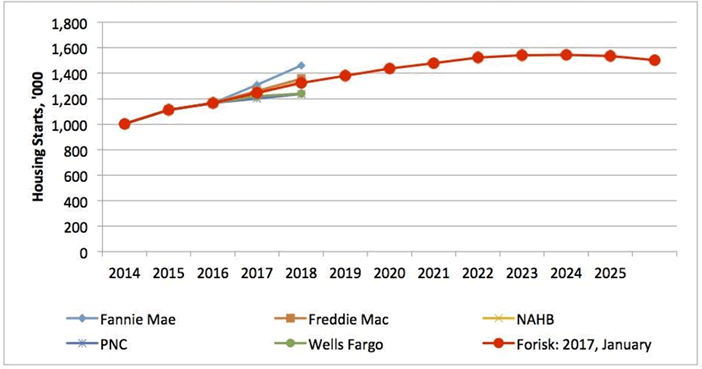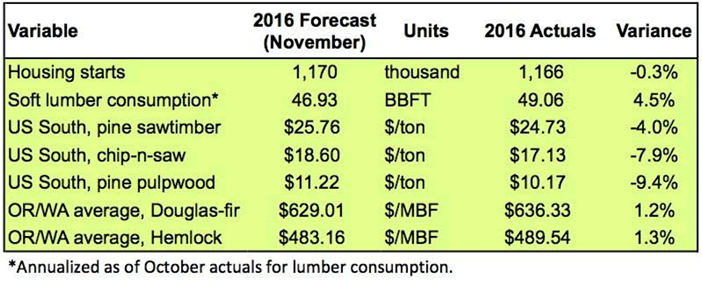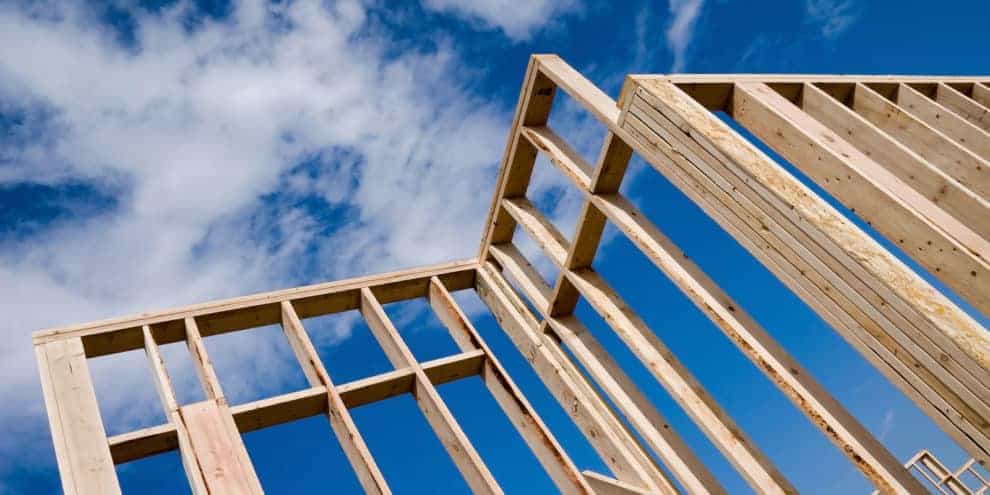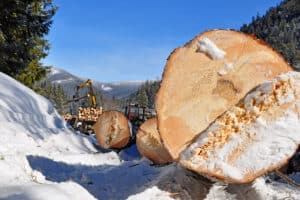Forecasts of business and market conditions support a range of investment decisions in the timber and forest products industries. Long-term forecasts help leaders dictate the direction of an investment strategy or organization; short-term forecasts support tactical, operational decisions at facilities and in the field. The models we build assess how local timber markets and wood baskets perform given sets of macroeconomic scenarios.
Housing Starts Outlook
Forisk’s Housing Starts Outlook combines independent forecasts from professionals in the housing industry. Currently, these include Fannie Mae, Freddie Mac, the National Association of Home Builders (NAHB), PNC, and Wells Fargo. Forisk applies long-term assumptions from the U.S. Energy Information Administration (EIA) in establishing the peak and trend over the next ten years.
Forisk Research Quarterly (FRQ) Q1 2017 U.S. Housing Starts Outlook, Base Case

Overall, Forisk projects 2017 housing starts of 1.25 million, up 6.8% from 2016 actuals. Forisk’s 2017 Base Case peaks at 1.54 million housing starts in 2023 before returning to a long-term trend approaching 1.50 million. For comparison, our January 2016 Base Case one year ago peaked at 1.58 million housing starts in 2020.
2016 Projections versus Year-End Actuals
Four times per year, we evaluate the performance of previous forecasts and earlier Forisk Research Quarterly (FRQ) models. How did Forisk’s final 2016 forecasts track relative to 2016 actuals? Overall, year-end actuals lagged projections across the board, driven by slower-than-estimated increases in housing starts and the associated lower levels of wood demand and lumber production. Annualized, actual housing starts came in at 1.166 million, or 0.3% (4,000 units) below Forisk’s final 2016 outlook.
For pine stumpage prices in the U.S. South, actual 2016 prices for sawtimber and chip-n-saw lagged Forisk’s projections by 4.0% and 7.9% each while pulpwood ended 9.4% below the 2016 forecast. Analyses of eleven individual state-by-state forecasts relative to Timber Mart-South actuals shows that Forisk’s projections were, on average, $0.60 per ton higher, $0.73 per ton higher, and $0.43 per ton higher than the actual pine sawtimber, chip-n-saw and pine pulpwood prices respectively for 2016.
Forisk Scorecard: Forecast versus 2016 Actuals

For the Pacific Northwest, delivered softwood prices reported by Wood Resources International and the Oregon Department of Forestry were 1.2% higher than Forisk final 2016 projections for domestic #2 delivered Douglas-fir along the Oregon/Washington coast, and 1.3% higher for domestic #2 delivered hemlock logs for the same region.
This content may not be used or reproduced in any manner whatsoever, in part or in whole, without written permission of LANDTHINK. Use of this content without permission is a violation of federal copyright law. The articles, posts, comments, opinions and information provided by LANDTHINK are for informational and research purposes only and DOES NOT substitute or coincide with the advice of an attorney, accountant, real estate broker or any other licensed real estate professional. LANDTHINK strongly advises visitors and readers to seek their own professional guidance and advice related to buying, investing in or selling real estate.










Add Comment